Dear Capitolsiters,
As I noted last week in the links, medical researchers Katalin Karikó and Drew Weissman have won the 2023 Nobel Prize in Physiology or Medicine for their discoveries related to the mRNA vaccines used to battle COVID-19. This news is good and overdue for many reasons, the biggest one of course being that their breakthrough undoubtedly saved many lives and helped restart the global economy following one of the worst pandemics in modern history. Somewhere lower on that list of reasons (but still important) is the fact that the award shows yet again that the United States—where both Karikó and Weissman reside and did much of their groundbreaking research—continues to have an outsize influence on global science and innovation, thanks in no small part (as we’ve discussed) to brilliant, doggedly-determined immigrants like Katalin Karikó.
As much as I want to cheer the award and its significance, however, the policy dork in me isn’t really in a rah rah mood. That’s because if Katalin Karikó’s inspiring story were written today, it very well could’ve happened outside the United States—or maybe not at all.
Immigrants and American Innovation
As the Economic Innovation Group’s Adam Ozimek noted last week, Karikó is the rule, not the exception, when it comes to U.S.-based immigrants winning Nobel prizes. This year, six of eight winners in the sciences were researchers living here, and four of those six—including Karikó—were born outside the United States:
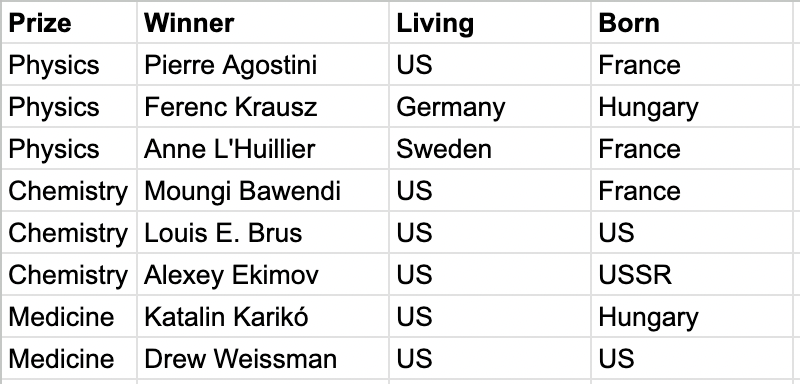
The United States has long punched above its weight at the Nobel, thanks to our wealth, world-class research institutions, and relative openness to global research collaboration and immigrants. From 2010 to 2022, for example, the United States had about half of all laureates, 28 of whom were foreign-born, and at least one immigrant in 10 of those 13 years. Since 1901, immigrants in the United States have comprised about 15 percent of all laureates, meaning that about one of every three U.S. Nobel winners over the last century was born outside the United States.
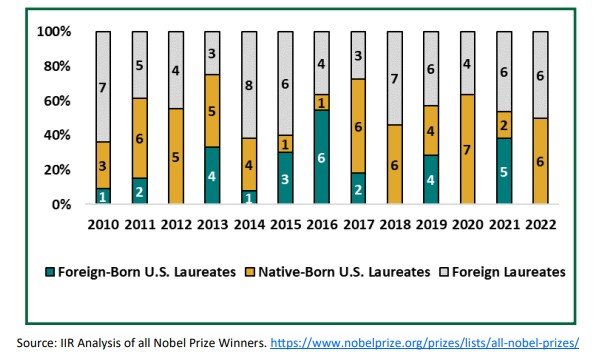
Elsewhere, Harvard’s William Kerr, author of the great book The Gift of Global Talent, documents that Nobel Prize winners are highly mobile—their rate of migration is “approximately 17 times higher than the rate for high school graduates”—and that the United States has historically been the primary beneficiary of this mobility. “Of the 203 migrants who received a Nobel Prize in Chemistry, Medicine, Physics, or Economics, 53% (107 individuals) were residing in the United States when they did their exceptional work,” he writes.
Winning a Nobel Prize isn’t (and shouldn’t be) the only metric of innovative success but, as we’ve already discussed, plenty of other metrics show just how important immigrants have been to the United States’ longstanding global tech supremacy, whether in academia or the corporate world. For example, Kerr also shows that the United States has an incredible global advantage for migrating inventors (as documented by the World Intellectual Property Organization and U.S. Patent and Trademark Office):
The top four countries in terms of immigrant inventors are the United States, Germany, Switzerland, and the United Kingdom. Together, these countries account for 65% of immigrant inventors. Figure 2 shows, however, that the United States alone accounts for 57% of this total, with immigrant inventors coming to America from around the globe. The pull is so strong that countries like Germany and the United Kingdom send more people abroad (most to the United States) than they receive from other nations.
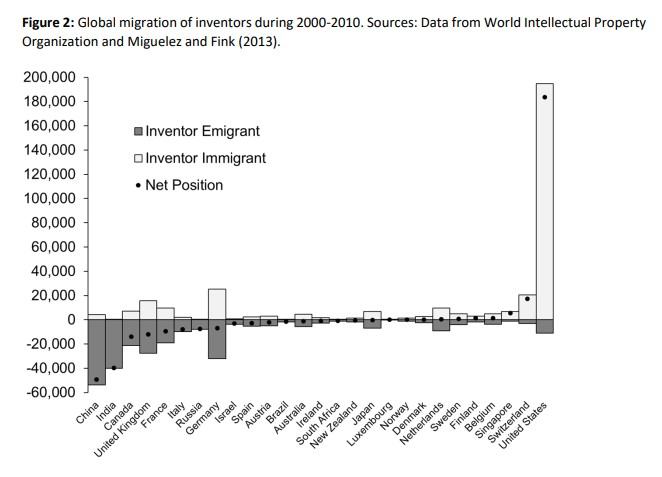
And he finds that these and other immigrants increasingly drive U.S. innovation:
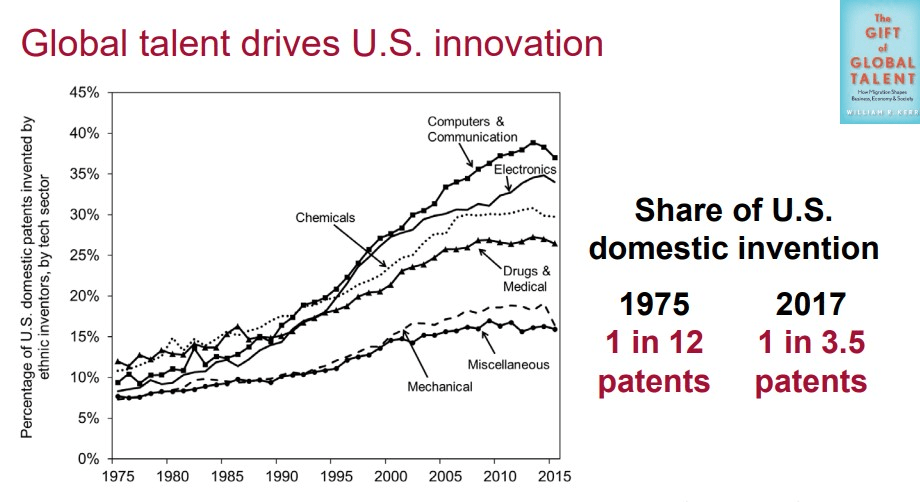
Other research, moreover, shows that immigrant innovators aren’t “crowding out” American innovators. In both the United States and abroad, an increase in immigrants working in a certain field tends to boost native-born innovators in that area. This is just further proof that America’s relative openness to the world’s smartest people has long been one of our superpowers.
Continued U.S. Restrictions on High-Skilled Immigration
Unfortunately, U.S. immigration policy doesn’t reflect these facts. We’re not entirely closed to skilled immigrants, and we admit thousands per year. But we’re not nearly as open to these people as we should be, given the immense gains that they provide the U.S. economy—and, in turn, the world. Even worse, U.S. policy has actually gotten stricter in the last few decades, such that people like Katalin Karikó might be unable to come and work here today.
This makes no sense.
As we’ve already discussed, the U.S. immigration system—both in law and practice—blocks the vast majority of people abroad from lawfully moving here. And this includes immigrants with valuable advanced degrees or skills and who have already lined up work in the United States (so-called “employer-sponsored” immigration). As my Cato colleague David Bier has documented, “Very few immigrants can qualify for employer‐sponsored immigration because the law either limits the number of applicants to extremely narrow classifications or imposes so many costs that few employers will even participate in the legal process.” There are, he shows, special visa categories for certain workers, including “outstanding professors and researchers” (EB-1B visa), but the criteria for this visa are onerous, subjective, and would almost certainly omit junior scientists that haven’t yet made a name for themselves. As a result of these requirements, “Just 1,982 professors and researchers obtained green cards through this path in 2019, 0.1 percent of all postsecondary teachers in the United States.”
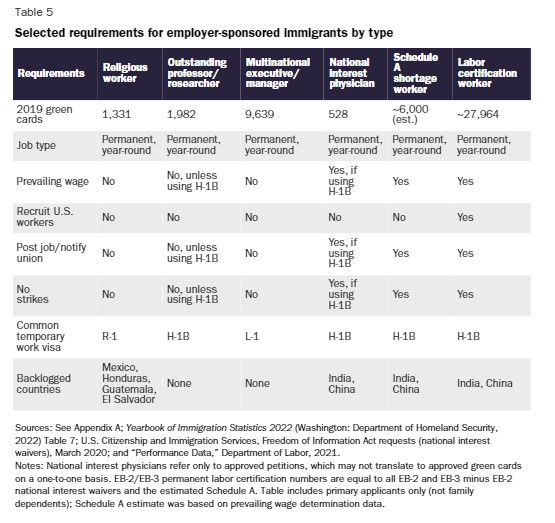
Sponsored immigrant workers who don’t qualify for a special exception have to jump through more hoops, including a costly and time-consuming labor certification process. Thus, almost all immigrants seeking employer-sponsored green cards abroad end up needing to obtain a temporary work visa while they wait. For high-skilled immigrants lacking “extraordinary ability” (and good luck qualifying for that) or already working for a multinational firm abroad, this means having to obtain an H-1B visa for “specialty occupations” via a system first implemented in 1990.
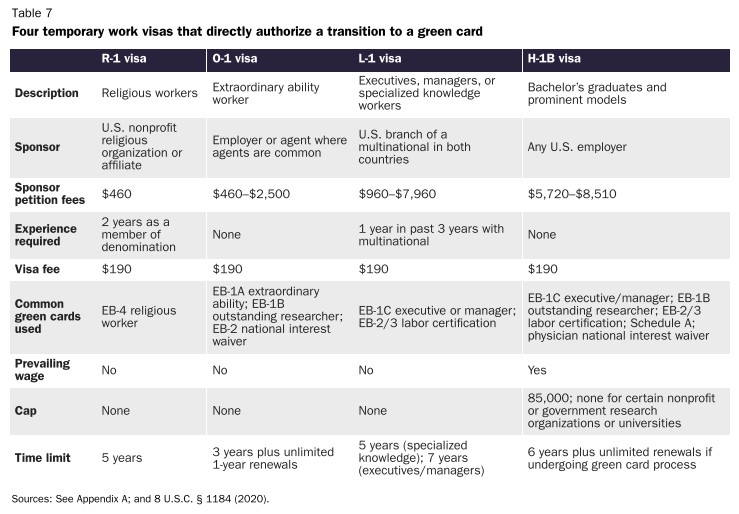
As Bier (and others) documents, however, the current H-1B system is rife with problems. It’s costly and time-consuming (see above for estimated costs/times); it’s subject to numerical caps (overall and by country) for most types of workers; it requires employers to jump through “prevailing wage” and other bureaucratic hoops; and it hinders immigrant workers’ ability to change jobs, get promoted, start businesses, or raise a family. Even if a worker can get an H-1B visa, moreover, she’s still subject to annual green card limits for permanent residence—limits that have ensured massive backlogs in most relevant visa categories:
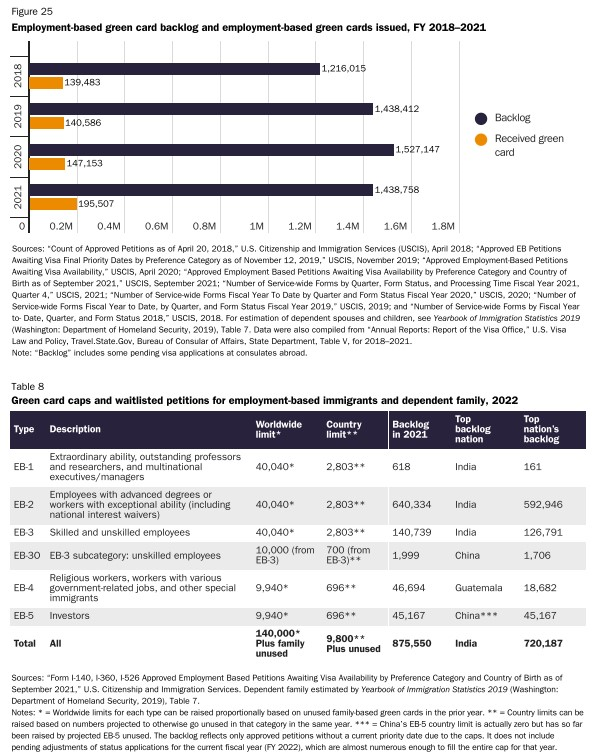
For all but the most highly decorated immigrants, even very smart ones with advanced degrees in important fields, coming to America is slow, costly, and uncertain—especially for the long term.
Would Katalin Karikó Make It Here Today?
Karikó’s story shows why this system needs reform and why policymakers can’t just wait until potential superstars become actual superstars before admitting them into the country.
For those still unfamiliar with her inspiring background, Karikó was born in then-communist Hungary in 1955 and earned her Ph.D. in biochemistry in 1982 from a local university. She worked at the Institute of Biochemistry, Biological Research Centre of Hungary until her lab lost its funding in 1985. So, she fled Hungary with her husband and small daughter (and about $1,000—or $2,800 today—obtained on the black market and smuggled in a teddy bear) to work at Temple University in Philadelphia, where she’d been offered a research position.
She was later set to move to Johns Hopkins but had that offer rescinded when her former boss at Temple supposedly felt betrayed and threatened to have her deported. Drama and career insecurity ensued. Ultimately, Karikó settled at the University of Pennsylvania in 1989, where she worked in relative obscurity until she famously left Penn in 2013 for the private sector because she couldn’t secure grant funding (and thus tenure). The rest, as they say, is history.
Would Karikó—not the 2023 superstar Nobel laureate, but the poor, unknown biochemist from 1985—have been able to make it to America under today’s immigration laws? That’s a difficult hypothetical for lots of reasons, but Cato’s “Green Card Game” simulator provides a depressing indication of the answer: Probably not.
The game lets people determine whether they—or a hypothetical person with certain skills and background—can secure a green card under existing U.S. law, so I tried to obtain a visa with Karikó’s basic information. It did not go well.
- I first tried to get my “Kaitlin” through in the “diversity lottery” (no employer sponsorship) and was rejected twice: Once because I assumed Karikó’s research gig at Temple had a definite end date (and thus didn’t have enough savings to show she could support herself), and then again because of the ridiculously low odds of winning the lottery. As the game shows, 18,300 people from Hungary entered the lottery in 2019, and only 38 received a diversity green card (odds of 0.208 percent).
- I changed course and tried for an employer sponsorship, assuming that Temple would be willing to bear the costs. As the game shows (and as noted above), this includes not just money, time, and paperwork, but also other hurdles, like verifying that an employer pays a “prevailing wage” (based on the Labor Department’s standard for, in this case, a Ph.D. biochemist) and obtaining a “labor certification” by interviewing and advertising for a native-born alternative (advertise for 30 days on a state website, in at least two Sunday editions of newspapers, and at the jobsite). Alas, I was rejected there too, because—based on the game’s random generator—a U.S. worker applied for the open position, thus making poor “Kaitlin” ineligible for an employer-sponsored green card.
- Finally, I tried self-sponsorship and was again denied. All told, I spent $4,110—more than Karikó’s actual savings—to keep losing the game:

After more spins of the wheel and tweaks to the criteria, I finally did succeed in winning an employer-sponsored visa. But beyond spending money I didn’t have, the entire process took our hypothetical Hungarian biochemist years to complete—even with an immigration lawyer (which can cost thousands more). Here’s a real-world example:
Given what’s at stake in these cases, my hypothetical “win” is hardly worth cheering.
Granted, I could probably have tried to rig the game (e.g., by claiming “extraordinary ability,” even though this is almost 40 years before Karikó’s Nobel Prize) to boost the odds of obtaining a green card. In several other respects, however, I was being generous. Beyond assuming her employer was willing to endure the costs and paperwork, for example, I assumed that she was easily able to obtain certain documents and vaccinations, and that she lacked a “meaningful affiliation” with a communist party (though Wikipedia notes that Karikó was in 1985 “listed as an intelligence asset by the Communist Hungarian secret police, something she says she was blackmailed into out of fear of repercussions on her career or reprisals against her father”). Communist affiliation, even forced, is an immediate rejection.
Given all of these hurdles, Jeremy Neufeld, an immigration policy expert with the Institute for Progress, delivered this depressing news to Vox last year (emphasis mine):
[T]he Covid-19 pandemic might have gone much worse if immigration had always been as restrictive as it is now. A number of co-founders and critical researchers with Moderna are immigrants, as is Katalin Karikó, a pioneer of mRNA research—who, if she had tried to immigrate after the 1990 H-1B reforms to the skilled guest worker program, might not have been able to come to the US at all.
And if you don’t believe me/us, feel free to play the game for yourself to see if your high-skilled immigrant can “win” too. Good luck.
Furthermore, this is just getting into the country, not lawfully remaining here. Given the various time and other restrictions on H-1B visas and backlogs for permanent ones, it’s far from certain that—after a decade-plus of not making it big here (and threats of literal deportation by her former boss)—today’s Karikó would’ve stayed in the United States long enough to make her world-changing discoveries, even if she successfully ran today’s legal gauntlet to first arrive here.
And this gets to the broader (and scarier) unknown about both Karikó and others like her: Would mRNA vaccines even exist today if she’d been blocked from meeting fellow laureate Weissman at Penn years ago or if she was otherwise denied access to those world-class facilities? Would someone else at Penn have had her now-famous determination to push on when nobody—not even her own department head—thought the technology was viable? And how many other innovations might humanity miss out on when the world’s smartest people are legally barred from accessing the world’s richest places?
It’s too depressing to even consider.
Summing It All Up
When I mention this gaping hole in U.S. immigration policy, a common response among sympathetic voices (never mind the nativists) is that, yes, this is a problem, but nothing will happen until the border is secured. Leaving aside the fact that—as we discussed months ago—the existing U.S. blockade on legal immigration helps fuel illegal immigration, the “but the border” retort remains only a political argument, not a substantive one. There is no policy reason that high-skilled immigration reform must be coupled with reforms to either border enforcement or other types of immigration (e.g., guest workers). Piecemeal legislation in other areas often can and does pass Congress all the time, while thornier related issues are left untouched. Yet on immigration, this doesn’t happen.
Indeed, while many Republican border hawks frequently claim they want more high-skilled immigration (and only oppose low-skilled or illegal immigration), Republicans have repeatedly shot down or refused to cosponsor proposals, such as the one in the CHIPS and Science Act’s predecessor (the “COMPETES Act”) that would’ve exempted holders of STEM Ph.Ds from numerical green card caps when they arise. Corporate America, meanwhile, says it needs highly skilled immigrants but chooses to prioritize other things, again for political reasons. Last year, in fact, big tech firms decided not to lobby for those COMPETES reforms because the attached subsidies (yay) were more important:
The chip industry has shared its anxiety over America’s slipping STEM workforce with Washington, repeatedly asking Congress to make it easier for high-skilled talent to stay. But unlike their lobbying for subsidies and tax breaks— which has gotten downright pushy at times—they’ve done so very quietly. While chip lobbyists have spent months telling anyone who will listen why the $52 billion in financial incentives are a “strategic imperative,” they’ve only recently been willing to discuss their immigration concerns on the record.
In late July, nine major chip companies planned to send an open letter to congressional leadership warning that the shortage of high-skilled STEM workers “has truly never been more acute” and urging lawmakers to “enact much-needed green card reforms.” But the letter was pulled at the last minute, after some companies worried about wading into a tense immigration debate at the wrong time.
Combine that strategic cowardice with many Democrats’ general reticence to push too hard on immigration for presumably similar political reasons (and some Dems perhaps seeing a strategic advantage in keeping the issue alive for donors and their base) and we get … nothing. But none of that frustrating stasis has to do with the actual substance of reforms themselves, which remain a no-brainer.
Other countries, meanwhile, are acting—and getting results (see this recent study on Canada’s startup visa). The New York Times reports, “China is facing a brain drain, and the United States isn’t taking advantage of it,” mainly because of “America’s complicated and unpredictable process for applying for visas and permanent resident status.” So those smart Chinese dissidents (and people like them from other countries) have ended up elsewhere—hopefully, for all our sakes, in a place with the resources to produce the next Katalin Karikó.
Chart(s) of the Week

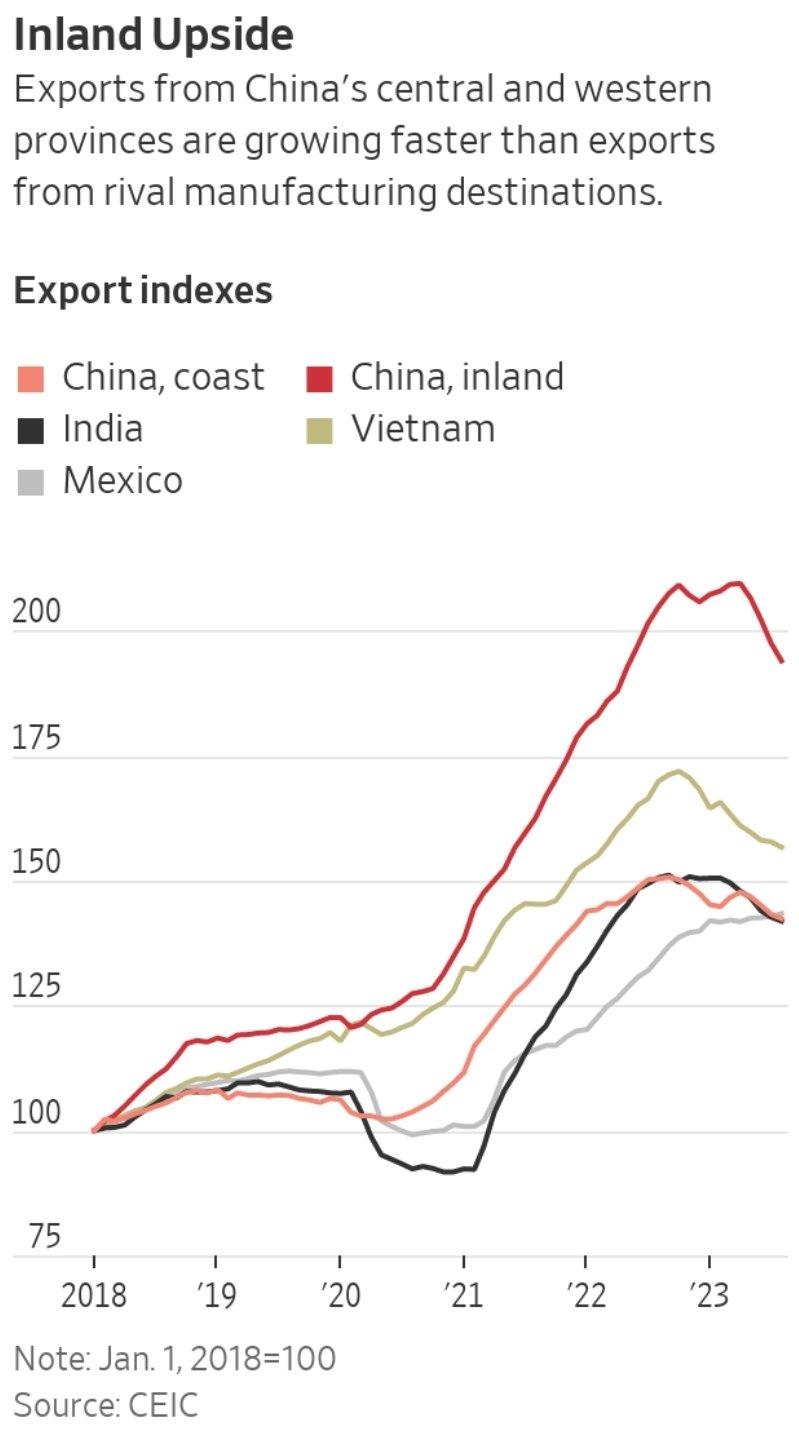
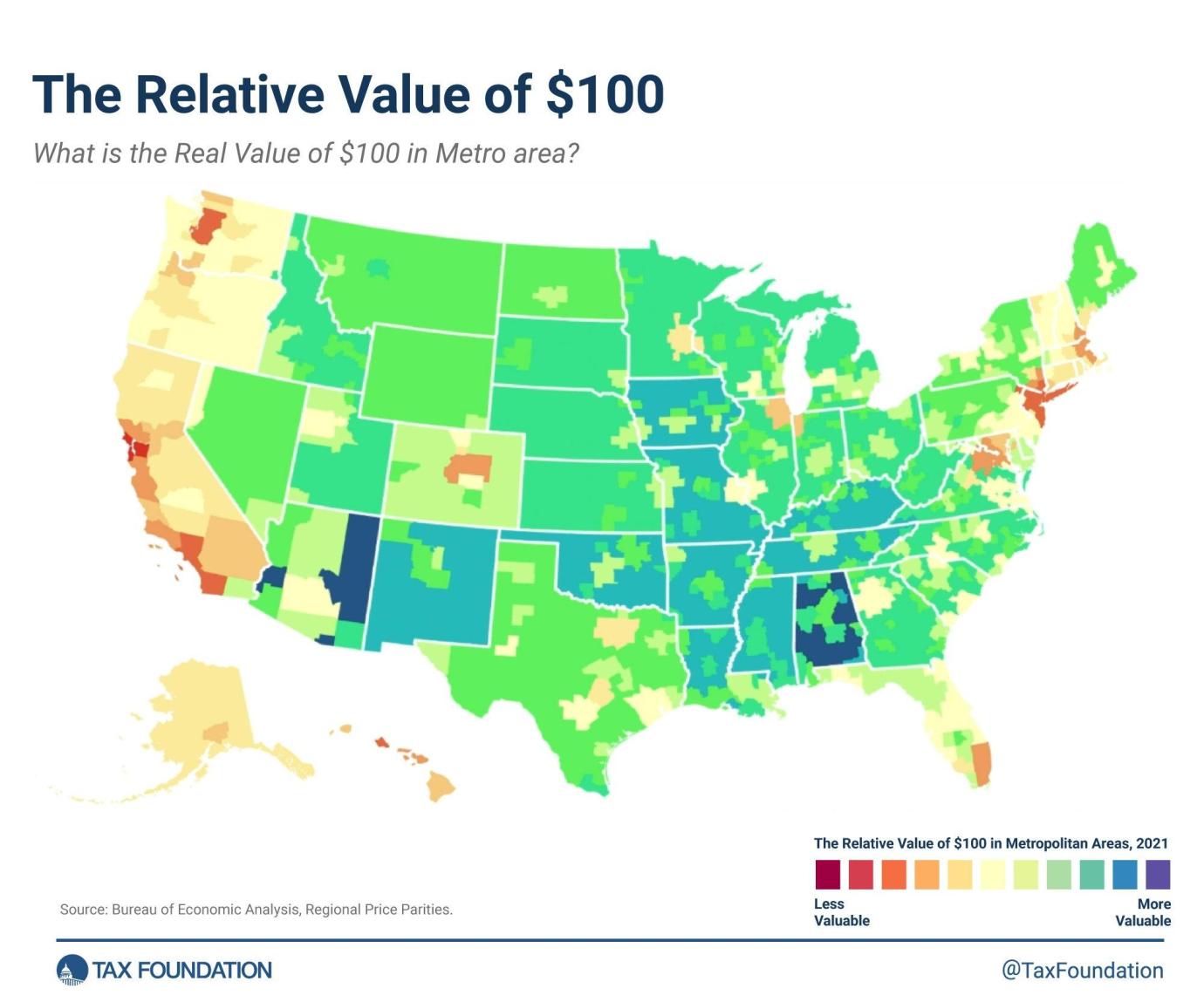
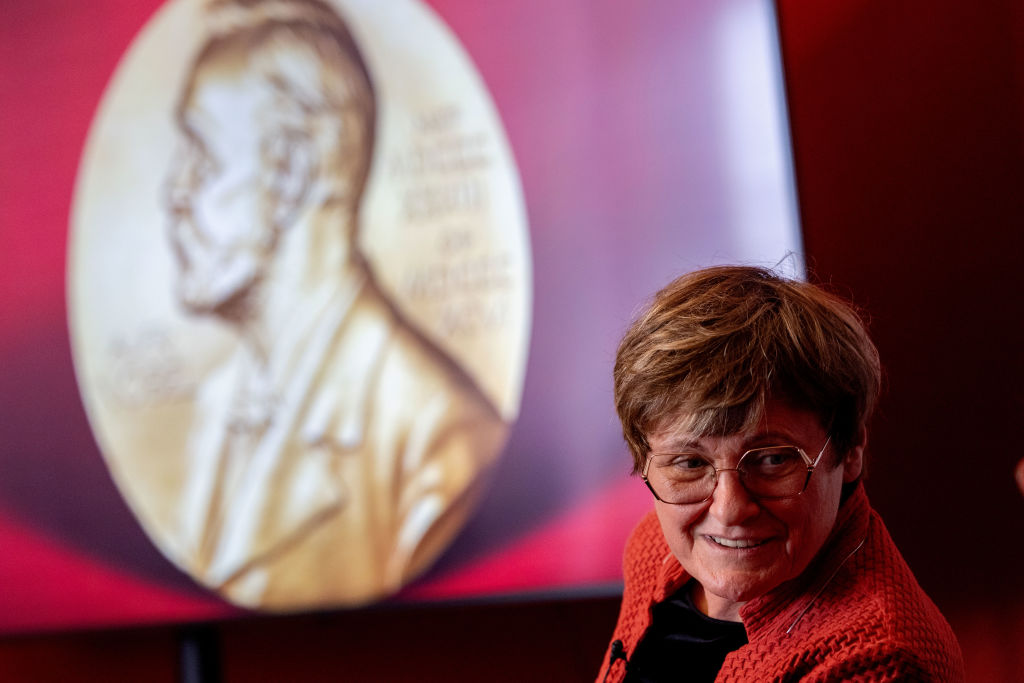


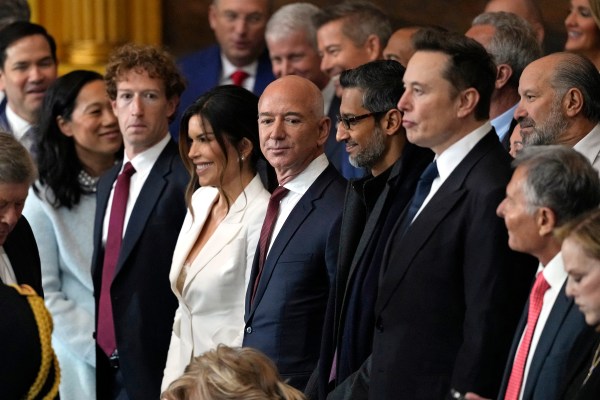



Please note that we at The Dispatch hold ourselves, our work, and our commenters to a higher standard than other places on the internet. We welcome comments that foster genuine debate or discussion—including comments critical of us or our work—but responses that include ad hominem attacks on fellow Dispatch members or are intended to stoke fear and anger may be moderated.
With your membership, you only have the ability to comment on The Morning Dispatch articles. Consider upgrading to join the conversation everywhere.